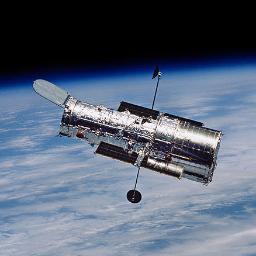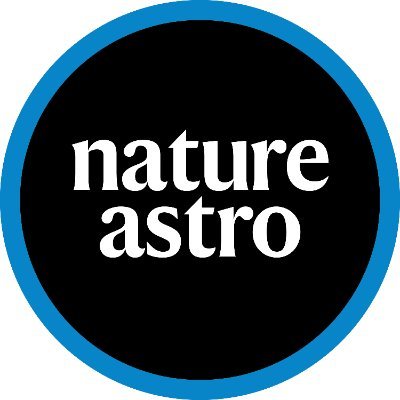
Keming Zhang
@AstroKeming
Followers
102
Following
162
Media
1
Statuses
45
Incoming NASA Hubble/Sagan Fellow at MIT | Schmidt AI in Science Postdoc Fellow at UC San Diego | Microlensing, Exoplanets, AI | Prev: UC Berkeley, Columbia
San Diego, CA
Joined May 2021
I’m excited to share that I’ll be starting as a NHFP Sagan Fellow at @MIT this fall! Look forward to connecting with new/old friends interested in everything Astro and AI.
Congratulations to the 2025 class of the NASA Hubble Fellowship Program! This program enables outstanding postdoctoral scientists to pursue independent research in any area of NASA astrophysics. Meet the fellows: https://t.co/mBP6LraBma
0
0
4
Check out this NYT story on our planet discovery! H/T @kjb_astro, @jlu_astro, @AgolEric, @bsgaudi, @seankterry, @QuinnKono, et al.
In six billion years the sun will expand into a red giant, consuming Mercury, maybe Venus and potentially Earth, too. But astronomers spotted a rocky world orbiting a white dwarf, suggesting a future in which our planet outlives its star.
0
1
4
An Earth-mass planet is inferred to have a white dwarf host, suggesting that terrestrial planets in Earth-like orbits may avoid being engulfed during the red-giant phases of their host stars. @AstroKeming, Zang et al.: https://t.co/JBPYvyjaMT / https://t.co/ilXNsGjHEi
@ucsdastro
0
12
63
The coolest paper on @arxiv today has to be this one, on the discovery of an Earth-mass planet and a brown dwarf orbiting a white dwarf. It makes me think about what happens to a planetary system when its star goes red giant (short thread) https://t.co/bmgM8HjFy4
1
18
63
Joint work with Weicheng Zang, @kjb_astro, @jlu_astro, Josh Bloom, @AgolEric, @bsgaudi, @seankterry, @QuinnKono, Shude Mao, and Natalie LeBaron
0
0
2
We have discovered a 1.9 Earth-mass planet orbiting a White Dwarf at ~2.1 au, around where you would expect to find planet Earth if it could avoid being engulfed by the Red Giant Sun. Also a bonus brown dwarf at ~30 au. https://t.co/zqhzIFSzjE
1
9
50
Amazing observing with Keck laser adaptive optics last night! I guess that means I’m now officially an observer? A big shoutout to @jlu_astro @profjsb @seankterry Natalie and our amazing OA/SA Jim and Rita for your support! Guess what we were looking at? (hint: right image)
2
2
10
Thank you very much Josh! It has been exciting five years working with you!
0
0
4
ADS has both its reference list and citations to the article. Presumably such a LLM-based system could also answer specific research questions by querying the keywords for relevant papers.
1
0
1
I thought the biggest drawback of ChatGPT for science is perhaps the hallucination. Has there been applications that answer research questions based on ADS/GS queries? One that could handle prompts like: how does this 2015 arXiv paper fit into past and current literature? …
LLMs meet Astro needs: if you have a project where you think your Astro needs could use some Large Language Model, post it here, and we can think as a community how to leverage resources amongst us to make it a practical reality (please retweet): https://t.co/NlFjTNEkfN
1
0
2
On behalf of the organizers, I am happy to announce that the Call for Papers is now out! https://t.co/eSPKrBK7M3 Deadline: September 22. ✍️#ML4PS2022
Great news, our Machine Learning and the Physical Sciences workshop at #NeurIPS2022 was accepted! This will be the fifth edition of this fantastic workshop series. More details to follow. #ML4PS2022
https://t.co/fBA3vhEBKc
1
22
90
So @MilesCranmer had this PySR demo at the ml4astro workshop, and I tried to recover the degeneracy relationship for microlensing u=(s1-1/s1+s2-1/s2)/2. Generated some fake data and PySR returned the equation in 10 seconds! How amazing. I wonder where else this could be applied
Minimalist poster at @icmlconf astro workshop with @physicskaze. The QR links to an interactive webpage, animations, and a GitHub. Also included in-person is a live demo of PySR! Come try to stump it with your worst equations.
0
4
42
October 2026 👀
NASA has selected Falcon Heavy to launch the Roman Space Telescope, which is designed to study dark energy and dark matter, search for and image exoplanets, and more. Liftoff is targeted for no earlier than October 2026 from Launch Complex 39A in Florida https://t.co/lZ0q79RmVh
0
0
0
Great news, our Machine Learning and the Physical Sciences workshop at #NeurIPS2022 was accepted! This will be the fifth edition of this fantastic workshop series. More details to follow. #ML4PS2022
https://t.co/fBA3vhEBKc
6
82
504
Thanks for the news article @przemroz! Really liked how this figure is much more intuitive than then ones in the actual paper😅
Przemek Mróz has written a News & Views on this research, entitled "AI providing new light on lensing degeneracies": https://t.co/weG5GMGzRb
0
0
2
A nice write-up about our recent @NatureAstronomy paper on a ubiquitous degeneracy in planetary microlensing, led by @UCB_Astronomy graduate student Keming Zhang @AstroKeming, along with Josh Boom @profjsb. https://t.co/029CFp7tvP
news.berkeley.edu
A machine learning algorithm UC Berkeley astronomers created to speed the detection of exoplanets by microlensing also pointed to problems in the mathematical theory for interpreting such observations
1
2
11
AI reveals unsuspected math underlying search for exoplanets https://t.co/zBqpmr0oje
news.berkeley.edu
A machine learning algorithm UC Berkeley astronomers created to speed the detection of exoplanets by microlensing also pointed to problems in the mathematical theory for interpreting such observations
1
12
22
UC Berkeley graduate student Keming Zhang @AstroKeming discussing the newly-discovered “offset degeneracy” in planetary microlensing events at #Exo4.
1
1
10
allowed us to perform large scale mock inference at minimal cost, effectively doing unsupervised learning and extracting insight from physics. Essentially, we're interacting with AI to turn discrete patterns into a coherent theory. The story: human-AI interaction at play. 2/2
0
0
3
Josh's post puts out recent discovery of a microlensing degeneracy into context (see previous post). Our ML engine was originally designed to accelerate inference for future microlensing data, but turns out to be a powerful tool for theoretical studies. The ML engine ... 1/2
1
0
3











